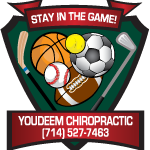Posts Tagged ‘Obesity’
Obesity and Car Accident Fatalities.
Obesity and Car Accident Fatalities. An analysis of over 57,000 automobile collisions concluded obese drivers are 21-80% more likely to die after the accident, depending on the severity of their obesity. Two possible reasons for the increase include: vehicle design and safety features that are optimized for normal weight adults, and the greater likelihood of…
Read MorePhysical Education Not At School!
Physical Education Not At School! In the 1920s, 97% of US college students were required to take Physical Education (PE); today, that number is at an all-time low of 39%. 34% of adolescents and teens ages 12-19 are overweight and 17% are obese. These rates have roughly doubled since 1980. The median PE budget for…
Read MoreAerobic or Resistance Training?
Aerobic or Resistance Training? A study of 234 obese/overweight adults compared the effects of aerobic training (AT), resistance training (RT) and both aerobic training and resistance training (AT/RT). Researches found the participants in the AT/RT group both increased lean mass (muscle) and decreased body fat, while the RT group did not decrease body fat, and…
Read MoreFood Advertising
Food Advertising. Childhood obesity has tripled in the past 30 years. Food companies spend $10 billion a year marketing in the United States, and 98% of that is on foods high in fat, sugar, or sodium. Journal of Pediatrics, November 2012
Read MoreRisks of Obesity!
Risks of Obesity! Being obese or overweight heightens the risk of diabetes, some cancers, high blood pressure, stroke, coronary heart disease, infertility, some forms of arthritis and respiratory problems. British Medical Journal, December 2012
Read MoreGood Vibrations
Good Vibrations. Within 7 months of starting a poor diet, normal mice became obese, with significant damage to their immune and skeletal systems. Daily 15-minute treatments of low-intensity vibration, barely perceptible to human touch, helped restore the immune and skeletal systems of the mice towards those of mice fed a regular diet. If this effect…
Read MoreChildhood Obesity Rates Falling!
Childhood Obesity Rates Falling! During the first decade of the 21st century, childhood obesity rates among children in lower income families in the United States have decreased (14.94% in 2010 vs. 15.21% in 2003). The Journal of the American Medical Association, December 2012
Read MoreObesity Projections!
Obesity Projections! At current projections, 42% of the US population will be obese by 2030, with 11% categorized as severely obese. Severe obesity is defined as a body mass index over 40 or roughly 100 pounds overweight. $550 billion could be saved in the next 20 years just by keeping obesity rates at the current…
Read MoreBe Careful What You Watch
Be Careful What You Watch. Researchers digitally removed the names of fast food chains from their commercials, showed them to young people ages 15-23, and asked them to identify which restaurant chain each commercial represented. Even after controlling for the total amount of time spent watching TV, young people whom correctly identified more than 50%…
Read MoreDepression and High-Fat Diets
Depression and High-Fat Diets. In addition to causing obesity, rich foods can actually cause chemical reactions in the brain that ultimately lead to depression. Researchers observed that mice that received a higher-fat diet showed signs of being anxious by avoiding open areas, as well as signs of depression. International Journal of Obesity, April 2012
Read More
